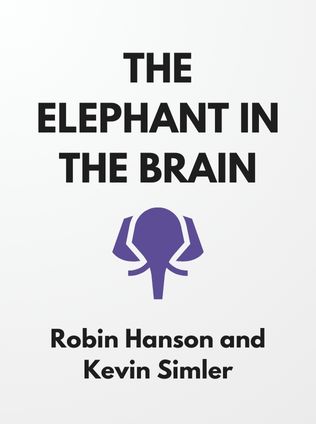
The Elephant in the Brain
Hidden Motives in Everyday Life
By Robin Hanson and Kevin Simler
Published 12/2017
About the Author
Kevin Simler and Robin Hanson, the minds behind The Elephant in the Brain, come from diverse yet complementary backgrounds. Kevin Simler is a software engineer and blogger known for his keen insights into human behavior and technology. His inquisitive nature led him to explore the intersection of human psychology, society, and evolution, ultimately culminating in his collaboration with Robin Hanson. Hanson, on the other hand, is an economics professor with a deep interest in social science, particularly in how evolutionary forces shape human behavior. He is also known for his often provocative views on various social issues, making him a controversial yet influential figure in his field. Together, Simler and Hanson bring a unique blend of technical expertise, psychological insight, and a knack for challenging conventional wisdom, which is evident throughout their work in The Elephant in the Brain.
Main Idea
At the core of The Elephant in the Brain is a bold thesis: much of what we do is motivated by selfish impulses that we are often unaware of. These hidden motives, the authors argue, are like the proverbial "elephant in the room"—large, influential, and largely ignored. Simler and Hanson assert that humans, as a cooperative social species, have evolved not just to deceive others about their true intentions, but to deceive themselves as well. This self-deception allows us to navigate the complexities of social life by maintaining the appearance of altruism and cooperation while pursuing our own self-interests. The book explores how these hidden motives permeate various aspects of life, including communication, consumption, and social institutions like healthcare, education, and religion.
Table of Contents
- Introduction: The Elephant in the Brain
- Part 1: Where Hidden Motives Come From
- Part 2: Hidden Motives in Daily Life
- Part 3: Hidden Motives in Our Social Institutions
- Part 4: Final Thoughts on Taming the Elephant
Introduction: The Elephant in the Brain
The book opens with a metaphor that sets the stage for the entire discussion: the "elephant in the brain." This metaphor serves to illustrate the idea that just as an elephant in a room is a large, undeniable presence that everyone tries to ignore, so too are our hidden motives an undeniable force that influences our behavior in ways we are often unwilling to acknowledge. The authors suggest that much of human behavior, particularly in social contexts, is driven by self-interest, which is masked by socially acceptable justifications. This sets the stage for a deeper exploration into the evolutionary origins of these behaviors and their manifestations in everyday life.
Part 1: Where Hidden Motives Come From
In the first part of the book, Simler and Hanson delve into the evolutionary roots of hidden motives. They argue that humans have evolved to be both selfish and cooperative, a duality that is central to understanding our behavior. The authors note that as a social species, humans rely heavily on cooperation for survival, yet we also compete with one another for resources, mates, and social status. This creates a tension between selfishness and cooperation, which has led to the evolution of hidden motives.
Sign up for FREE and get access to 1,400+ books summaries.
You May Also Like
The Subtle Art of Not Giving a F*ck
A Counterintuitive Approach to Living a Good Life
By Mark MansonRich Dad Poor Dad
What the Rich Teach Their Kids About Money - That the Poor and Middle Class Do Not!
By Robert T. KiyosakiHow To Win Friends and Influence People
The All-Time Classic Manual Of People Skills
By Dale CarnegieFreakonomics
A Rogue Economist Explores the Hidden Side of Everything
By Steven D. Levitt and Stephen J. DubnerQuiet: The Power of Introverts
The Power of Introverts in a World That Can't Stop Talking
By Susan Cain



















